If I were a rich man I would have and apartment in Rome and a house on the Amalfi Coast. While I cannot buy a house on the Amalfi coast, I can rent one for a vacation and on the way, why not spend a few days in Rome?
We always go to the same place for lunch when we arrive in Rome. We drop off our bags and walk to Da Giggetto(39-066861 05) at Portico D’Ottavia 12A, in the Jewish ghetto. The afternoon was sunny and too hot to dine outside so we sat in a newly opened room with big glass windows onto the Portico D’Ottavia and the synagogue.
I do not need to look at the menu because I always order the same things: fiori di zucca ripieni con mozzarella e alici The flowers were small and crunchy and very good. I also get carciofi alla giudia (fried artichokes) and spaghetti con vongoleveraci. The tiny clams were tender and seasoned with just the right amount of parsley, garlic, olive oil and a hint of hot pepper. Michele had il filetto di baccala(she loves the way the Romans fry) and the puntarelle in salsa d’ alici, her favorite salad, a type of chicory. It was a relaxing start to our trip.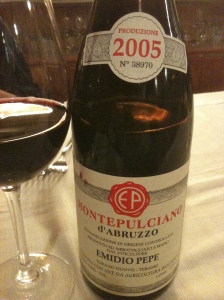
For a number of years now we have been trying to go restaurant Armando al Pantheon but somehow never get there because it is always booked up. This time, Michele made a reservation on line from NYC. We started off with what I always order in a traditional Roman restaurant: zucchini flowers, bucatini alla matriciana and abbacchio arrosto. The dessert was a strawberry crostata with a lattice top. Michele really loved the food here. The wine was the 2005Montepulciano D’Abruzza, from Eduardo Valentini it was less than 40 euro–a real bargain in a restaurant. The wine was big but with a lot of fruit and not as tannic as I would have expected. Most of my experiences with these wines are ones that are 25 years and older. The wine prices in Rome, especially for non-local wines, were better than on the Amalfi coast.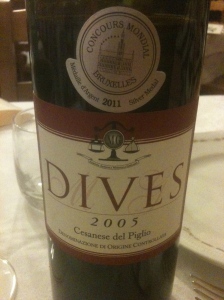
At Checchino dal 1887 V (www.checchino1887.com), Via Monte 30 Testaccio, Francesco Mariani takes care of the front of the house while his brother Elio is in the kitchen. A number of years ago Francesco did us a big favor by getting us on a train to Genoa during a train strike. Aside from that, it is in my opinion that with over six hundred wines from Italy and all over the world, this is the best restaurant in Rome for both wine and food. I always have long conversations with Francesco about Italian wine and which wine I should order with what I am eating. Every time I go, Francesco remembers the wine I ordered the last time I was there. This time he recommended a wine from Lazio, Cesanese del Piglio 2005 DOC from Azienda Agricola MarcellaGuliano. They no longer have any Fiorano Rosso or older vintages of Colle Picchione “Vigna dal Vassallo”. They still have a number of vintages of the Fiorano Bianco, but serve it as a dessert wine.
Once again I ordered the tasting menu because it had all of my favorite foods. I started with a tortino of eggs, peppers and tomato; this was followed by pastaalla Matriciana (yes again). It could not have been better. Then rabbit (coniglio alla olive di Gaeta con rughetta and pomodoro) followed by torta de mele(apple tart).
Checchino is still a member of L’ Unione di Ristoranti del Buon Ricordo, a group of restaurants that give you a plate if you order their signature dish or tasting menu. Since we both ordered the tasting menu we were given two plates. We have almost 100 of these plates and eight are from Checchino.
Pierliugi(39-06-6861 302) Michele loves to sit al fresco at this seafood restaurant, which is in the charming Piazza dè Ricci but it was close to 95 degrees so we opted to do what all the Italians were doing- -eat inside and enjoy the air conditioning.
We started with the stuffed fried zucchini flowers, and then I had bocconcini di polenta con baccala, polenta bites with salt cod. Michele had the very Romancacio e pepe. They have their own version of pasta all’amatriciana made with paccheri, a wide pasta tube. The sauce includes shellfish and of course I had to order it. It was very good but I would have enjoyed it more if there were less pecorino cheese, which seemed a bit much for the shellfish. For the main course I had scampi (langoustine) and large shrimp on the grill. The waiter was very good and we had a long discussion about wine. I ordered theFiano di Avellino DOCG 2009 made from 100% Fiano from Guido Marsella. Pierluigi’s wine prices were higher than any restaurant we visited in Rome on this trip. When we told the waiter we were from NYC he told us that the owner might want to speak with us since he is opening a restaurant in Williamsburg, Brooklyn. After we finished lunch the owner, Lorenzo Lisi, came over and told us all about his plans for the new restaurant and that it would open in September.
The waiter was very good and we had a long discussion about wine. I ordered theFiano di Avellino DOCG 2009 made from 100% Fiano from Guido Marsella. Pierluigi’s wine prices were higher than any restaurant we visited in Rome on this trip. When we told the waiter we were from NYC he told us that the owner might want to speak with us since he is opening a restaurant in Williamsburg, Brooklyn. After we finished lunch the owner, Lorenzo Lisi, came over and told us all about his plans for the new restaurant and that it would open in September.
Roscioli Salumeria Vineria con Cucina – Via dei Giubbonari 21-22. This is not only a restaurant but also a salumeria, a shop specializing in salumi and
cheese. Michele likes the restaurant because she believes it has the best carbonara in Rome. It also has some very creative items like the hamburger di bufala with grilled ham and a balsamic drizzle, and the burrata e alici, both of which we ordered along with thecarbonara. I usually order thematriciana but Michele is right, thecarbonara was terrific. The wine was the 2003 Cerasuolo (Rosè) 100% Montepulciano d’Abuzzo from Eduardo Valentini. It was less than 40 Euro. For more on Rome see Wine in Rome a great blog by Tom Maresca.
More articles on Charles Scicolone's i-Italy Blog
































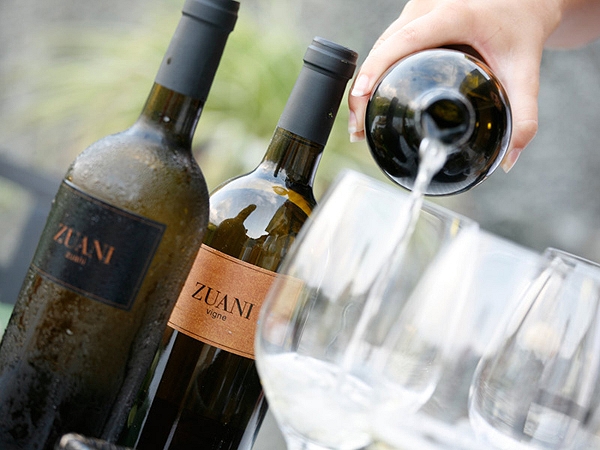


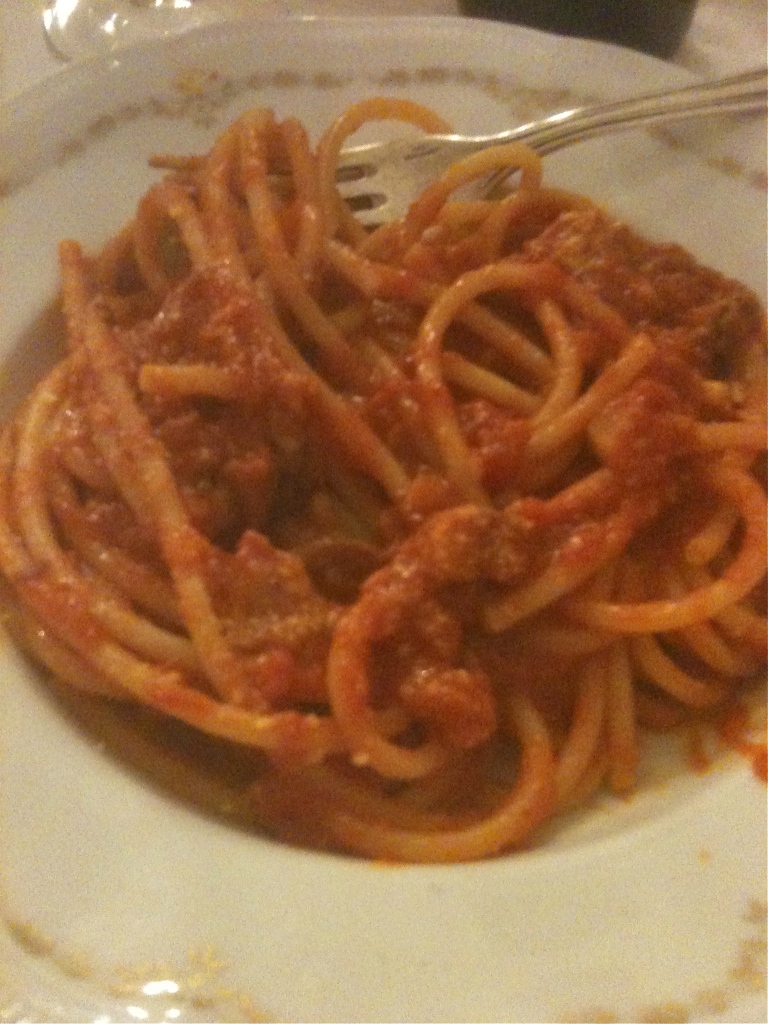
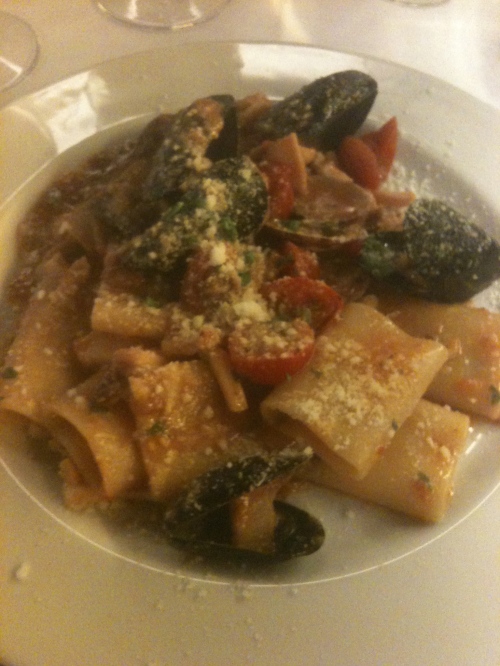

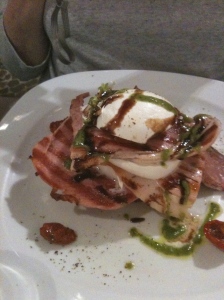






.jpg)



